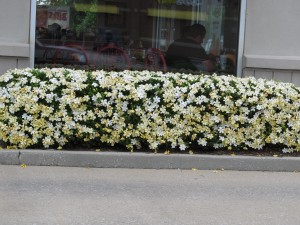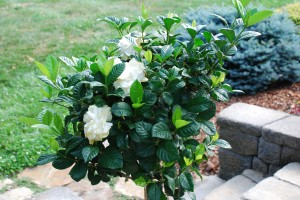The longer you garden, many plant species keep improving, including their winter hardiness. A few years ago, growing gardenias (Gardenia jasminoides) in a U.S. zone 6 garden was a dream. Today, hardy gardenias are a safe bet in zone 7 or in zone 6 in a protected area of the garden, away from wintry winds. Otherwise, gardenias make good houseplants.
Pure white fragrant flowers cover this lovely evergreen shrub in early summer. Single pinwheel shaped flowers are most common, but semi-double and double flowering types are also available. Cultivars vary in flower fragrance from a hint to highly scented.
Gardenias grow 2 – 6 feet tall and 3 – 6 feet wide, depending on cultivar and desired size after pruning. Gardenia care is similar to that of rhododendron or camellia. Provide morning sun and afternoon shade or in full day dappled sunlight. Locate gardenias near a home entry door, patio or deck, where you and your guests may fully enjoy their fragrance.
Whether planted in a container or garden bed, gardenias require moist, well-drained, acidic medium (soil) that contains lots of organic matter. Gardenias need watering when rainfall is less than an inch per week. Fertilize plant(s) every spring with an acidic type fertilizer such as water-soluble Miracle-Gro™ or Espoma Hollytone™.
Yellowing leaves indicates any of three possible problems. If it is the bottom foliage turning yellow, it could be under- or over-watering. If the upper leaves show interveinal chlorosis (yellowing), your gardenia plant needs an iron supplement or the soil is not be acidic enough. Gardenias are subject to a number of pests which can be managed using insecticidal soap.
‘Frost Proof’ and ‘Daisy’ are two that I have trialed in my zone 6 garden. The harsh winter of 2013-14 killed both varieties to the ground. By late June both cultivars had sprung back to life from the crown but did not bloom. A year later both cultivars were dead.



 Posted in
Posted in 
